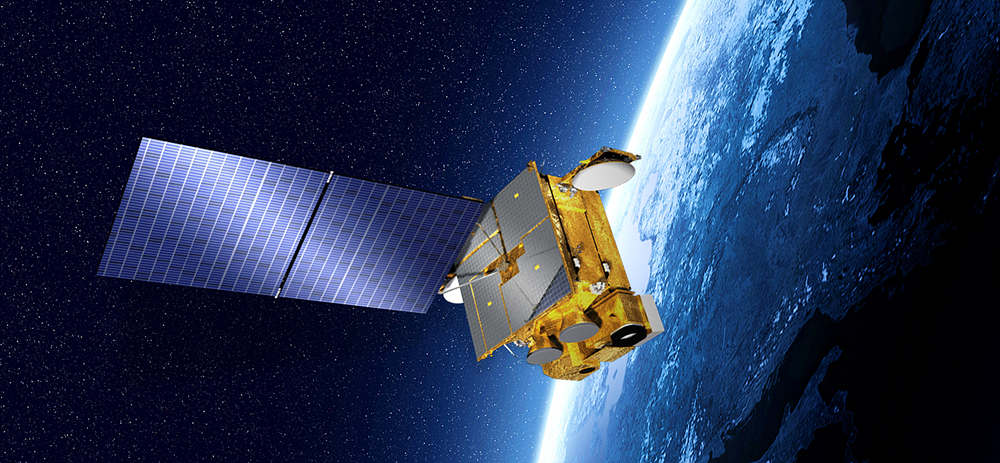개인정보처리방침
< 주식회사 솔탑>('www.soletop.com'이하 'www.soletop.com')은(는) 개인정보보호법에 따라 이용자의 개인정보 보호 및 권익을 보호하고 개인정보와 관련한 이용자의 고충을 원활하게 처리할 수 있도록 다음과 같은 처리방침을 두고 있습니다. < 주식회사 솔탑>('www.soletop.com') 은(는) 회사는 개인정보처리방침을 개정하는 경우 웹사이트 공지사항(또는 개별공지)을 통하여 공지할 것입니다.
본 방침은부터 2019년 1월 1일부터 시행됩니다.
1. 개인정보의 처리 목적
< 주식회사 솔탑>('www.soletop.com'이하 'www.soletop.com')은(는) 개인정보를 다음의 목적을 위해 처리합니다. 처리한 개인정보는 다음의 목적이외의 용도로는 사용되지 않으며 이용 목적이 변경될 시에는 사전동의를 구할 예정입니다.
가. 민원사무 처리
민원인의 신원 확인, 민원사항 확인, 사실조사를 위한 연락·통지, 처리결과 통보 등을 목적으로 개인정보를 처리합니다.
2. 개인정보 파일 현황
1. 개인정보 파일명 : 개인정보
- 개인정보 항목 : 이메일, 휴대전화번호, 생년월일, 이름
- 수집방법 : 홈페이지
- 보유근거 : 개인정보보호법
- 보유기간 : 1년
- 관련법령 : 소비자의 불만 또는 분쟁처리에 관한 기록 : 3년
3. 개인정보의 처리 및 보유 기간
① < 주식회사 솔탑>('www.soletop.com')은(는) 법령에 따른 개인정보 보유·이용기간 또는 정보주체로부터 개인정보를 수집시에 동의 받은 개인정보 보유,이용기간 내에서 개인정보를 처리,보유합니다.
② 각각의 개인정보 처리 및 보유 기간은 다음과 같습니다.
1.<민원사무 처리>
<민원사무 처리>와 관련한 개인정보는 수집.이용에 관한 동의일로부터<1년>까지 위 이용목적을 위하여 보유.이용됩니다.
-보유근거 : 개인정보보호법
-관련법령 : 소비자의 불만 또는 분쟁처리에 관한 기록 : 3년
-예외사유 :
4. 개인정보의 제3자 제공에 관한 사항
① < 주식회사 솔탑>('www.soletop.com'이하 'www.soletop.com')은(는) 정보주체의 동의, 법률의 특별한 규정 등 개인정보 보호법 제17조 및 제18조에 해당하는 경우에만 개인정보를 제3자에게 제공합니다.
② < 주식회사 솔탑>('www.soletop.com')은(는) 다음과 같이 개인정보를 제3자에게 제공하고 있습니다.
5. 개인정보처리 위탁
① < 주식회사 솔탑>('www.soletop.com')은(는) 원활한 개인정보 업무처리를 위하여 다음과 같이 개인정보 처리업무를 위탁하고 있습니다.
② < 주식회사 솔탑>('www.soletop.com'이하 'www.soletop.com')은(는) 위탁계약 체결시 개인정보 보호법 제25조에 따라 위탁업무 수행목적 외 개인정보 처리금지, 기술적․관리적 보호조치, 재위탁 제한, 수탁자 대한 관리·감독, 손해배상 등 책임에 관한 사항을 계약서 등 문서에 명시하고, 수탁자가 개인정보를 안전하게 처리하는지를 감독하고 있습니다.
③ 위탁업무의 내용이나 수탁자가 변경될 경우에는 지체없이 본 개인정보 처리방침을 통하여 공개하도록 하겠습니다.
6. 정보주체와 법정대리인의 권리·의무 및 그 행사방법
이용자는 개인정보주체로써 다음과 같은 권리를 행사할 수 있습니다.
① 정보주체는 주식회사 솔탑에 대해 언제든지 개인정보 열람,정정,삭제,처리정지 요구 등의 권리를 행사할 수 있습니다.
② 제1항에 따른 권리 행사는 주식회사 솔탑에 대해 개인정보 보호법 시행령 제41조제1항에 따라 서면, 전자우편, 모사전송(FAX) 등을 통하여 하실 수 있으며 주식회사 솔탑은(는) 이에 대해 지체 없이 조치하겠습니다.
③ 제1항에 따른 권리 행사는 정보주체의 법정대리인이나 위임을 받은 자 등 대리인을 통하여 하실 수 있습니다. 이 경우 개인정보 보호법 시행규칙 별지 제11호 서식에 따른 위임장을 제출하셔야 합니다.
④ 개인정보 열람 및 처리정지 요구는 개인정보보호법 제35조 제5항, 제37조 제2항에 의하여 정보주체의 권리가 제한 될 수 있습니다.
⑤ 개인정보의 정정 및 삭제 요구는 다른 법령에서 그 개인정보가 수집 대상으로 명시되어 있는 경우에는 그 삭제를 요구할 수 없습니다.
⑥ 주식회사 솔탑은(는) 정보주체 권리에 따른 열람의 요구, 정정·삭제의 요구, 처리정지의 요구 시 열람 등 요구를 한 자가 본인이거나 정당한 대리인인지를 확인합니다.
7. 처리하는 개인정보의 항목 작성
① < 주식회사 솔탑>('www.soletop.com'이하 'www.soletop.com')은(는) 다음의 개인정보 항목을 처리하고 있습니다.
8. 개인정보의 파기
< 주식회사 솔탑>('www.soletop.com')은(는) 원칙적으로 개인정보 처리목적이 달성된 경우에는 지체없이 해당 개인정보를 파기합니다. 파기의 절차, 기한 및 방법은 다음과 같습니다.
- 파기절차
이용자가 입력한 정보는 목적 달성 후 별도의 DB에 옮겨져(종이의 경우 별도의 서류) 내부 방침 및 기타 관련 법령에 따라 일정기간 저장된 후 혹은 즉시 파기됩니다. 이 때, DB로 옮겨진 개인정보는 법률에 의한 경우가 아니고서는 다른 목적으로 이용되지 않습니다.
- 파기기한
이용자의 개인정보는 개인정보의 보유기간이 경과된 경우에는 보유기간의 종료일로부터 5일 이내에, 개인정보의 처리 목적 달성, 해당 서비스의 폐지, 사업의 종료 등 그 개인정보가 불필요하게 되었을 때에는 개인정보의 처리가 불필요한 것으로 인정되는 날로부터 5일 이내에 그 개인정보를 파기합니다.
- 파기방법
전자적 파일 형태의 정보는 기록을 재생할 수 없는 기술적 방법을 사용합니다.
9. 개인정보 자동 수집 장치의 설치•운영 및 거부에 관한 사항
주식회사 솔탑 은 정보주체의 이용정보를 저장하고 수시로 불러오는 ‘쿠키’를 사용하지 않습니다.
10. 개인정보 보호책임자 작성
① 주식회사 솔탑(‘www.soletop.com’이하 ‘www.soletop.com) 은(는) 개인정보 처리에 관한 업무를 총괄해서 책임지고, 개인정보 처리와 관련한 정보주체의 불만처리 및 피해구제 등을 위하여 아래와 같이 개인정보 보호책임자를 지정하고 있습니다.
▶ 고객지원
제품문의 CS 담당자 : support@soletop.com
채용문의 인사 담당자 : grkim@soletop.co.kr
홈페이지 문의 웹 담당자 : design@soletop.com
▶ 개인정보 보호책임자
성명 :김수한
직책 :실장
연락처 :042-716-0272
이메일 :shkim@soletop.co.kr
※ 개인정보 보호 담당부서로 연결됩니다.
▶ 개인정보 보호 담당부서
부서명 :인사총무팀
담당자 :김가람
연락처 :042-335-0170
② 정보주체께서는 주식회사 솔탑(‘www.soletop.com’이하 ‘www.soletop.com) 의 서비스(또는 사업)을 이용하시면서 발생한 모든 개인정보 보호 관련 문의, 불만처리, 피해구제 등에 관한 사항을 개인정보 보호책임자 및 담당부서로 문의하실 수 있습니다. 주식회사 솔탑(‘www.soletop.com’이하 ‘www.soletop.com) 은(는) 정보주체의 문의에 대해 지체 없이 답변 및 처리해드릴 것입니다.
11. 개인정보 처리방침 변경
①이 개인정보처리방침은 시행일로부터 적용되며, 법령 및 방침에 따른 변경내용의 추가, 삭제 및 정정이 있는 경우에는 변경사항의 시행 7일 전부터 공지사항을 통하여 고지할 것입니다.
12. 개인정보의 안전성 확보 조치
< 주식회사 솔탑>('www.soletop.com')은(는) 개인정보보호법 제29조에 따라 다음과 같이 안전성 확보에 필요한 기술적/관리적 및 물리적 조치를 하고 있습니다.
1. 정기적인 자체 감사 실시
개인정보 취급 관련 안정성 확보를 위해 정기적(분기 1회)으로 자체 감사를 실시하고 있습니다.
2. 개인정보 취급 직원의 최소화 및 교육
개인정보를 취급하는 직원을 지정하고 담당자에 한정시켜 최소화 하여 개인정보를 관리하는 대책을 시행하고 있습니다.
3. 내부관리계획의 수립 및 시행
개인정보의 안전한 처리를 위하여 내부관리계획을 수립하고 시행하고 있습니다.









